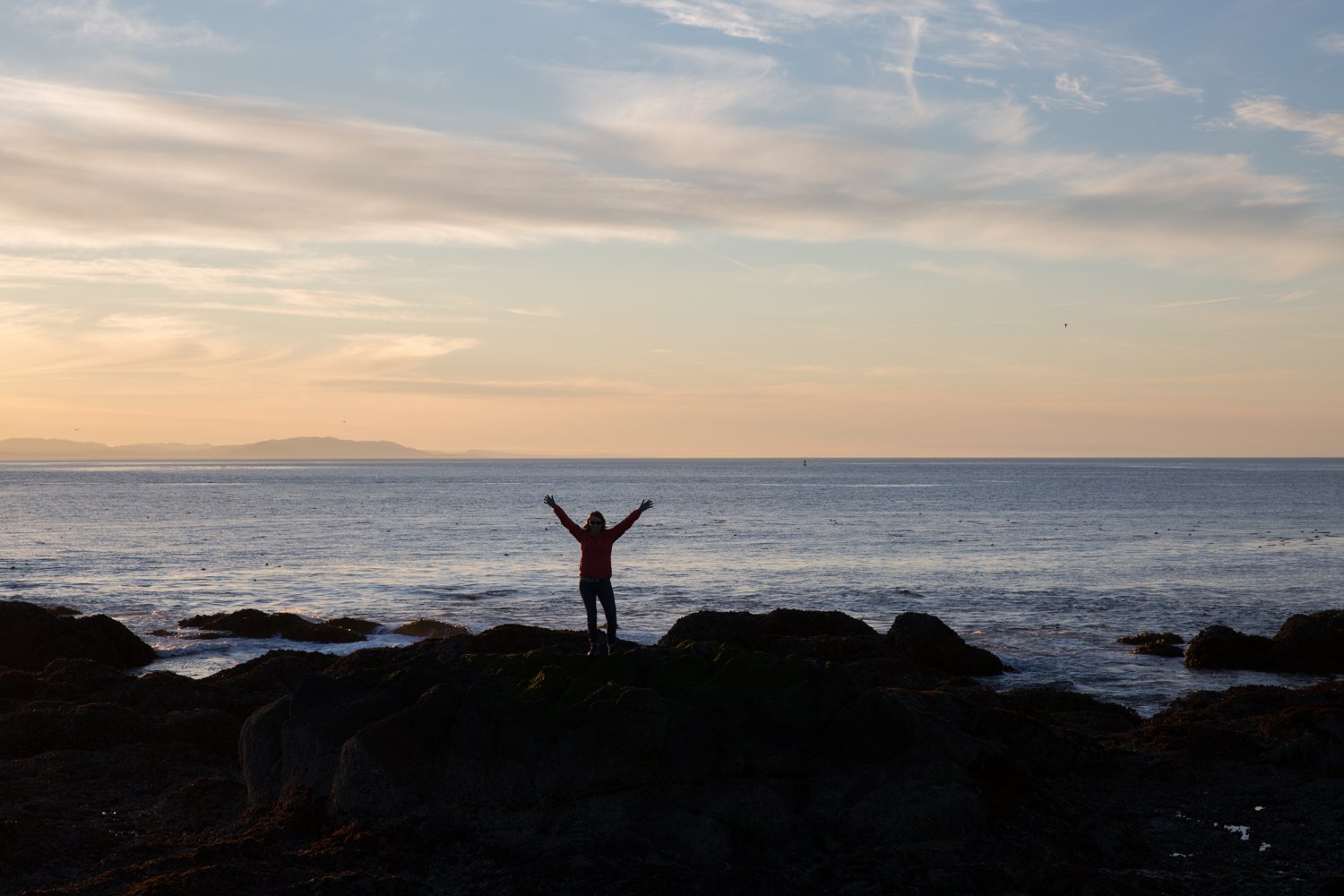Bioluminescent Kayaking in Washington State
Imagine kayaking through a glowing sea of stars. That’s what it’s like to go on a bioluminescent kayaking tour! Each paddle brings more sparkles, and it’s such a magical experience.
Our first bioluminescence tour was in Miami nearly a decade ago. We’ve reminisced about it often, and we both agree it was one of our favorite tours we’ve done. Since it’s possible to see bioluminescence here at home, we thought it was time to give it a try in Washington! The experience, although colder, was just as impressive a second time around.
Disclosure: We’ve included affiliate links with recommended hiking gear in this post. If you click through and buy something, we’ll receive a small portion of that sale. You won’t be charged more, and we haven’t been paid by any of these retailers to share their information. These are all our genuine preferences.
What is bioluminescence
All kinds of animals are bioluminescent, but the bioluminescence we see in the ocean is from an algae bloom of plankton.
It usually glows blue and is brightest when it’s been agitated from paddles, boats, currents, waves, and rain. The cause of algae bioluminescence is unknown, but scientists suspect it’s to confuse prey, attract prey, or lure mates. Washington’s bioluminescence is safe to touch, but this isn’t always the case everywhere.
It’s difficult to capture photos of the bioluminescence — to be done well, it would have to be done from shore with long exposures. The images showing it below, are only a fraction of what we were able to see.
Where can you see bioluminescence?
Bioluminescence can be seen in the ocean throughout the world! In Washington state, the bays along the Puget Sound make for an excellent place to kayak and view bioluminescence. It can be harder to see from the shore, but we’ve seen it faintly glowing on waves as they break onto shore, too.
When can you see bioluminescence in Washington?
June through September
Algae blooms of plankton begin in the warmer months when high concentrations of nutrients and sunlight promote growth. In Washington, this happens between late spring and early fall.
How much bioluminescence you’ll see is unpredictable, but you can better your odds by going during a full moon and visiting locations with little light pollution.
On our tour, the bioluminescence was brightest near the shore, under the shade of trees. Some locations were more active than others, so we stopped to splash with our paddles whenever we were in an especially active spot.
Bioluminescence kayaking tours
You don’t need to have any kayaking experience to enjoy these tours. Guides will give you instructions before launching, and you can find instructions on how to paddle here. If you’re nervous about kayaking, try to be one of the first in your group to get in the water so you’ll have time to practice before the tour begins. You’ll get the hang of it quickly!
All tours provide and require participants to wear life jackets. You will also have a light on your kayak and be given a headlamp to use if you don’t own one. Most, if not all, of these tours use double kayaks. The stronger person should sit in the back of the kayak.
Book a tour
You’ll find bioluminescent kayaking tours throughout Washington. Consider booking a tour with the following guides:
San Juan Islands
Friday Harbor
Eastsound
Whidbey Island
Anacortes
Langley
Olympic Peninsula
Brinnon
Marrowstone Island
Kitsap Peninsula
Port Gamble
Bellingham
On a budget? The Olympic Outdoor Center on the Kitsap Peninsula offers the cheapest tour (this is the one we went on and loved), with the Community Boating Center in Bellingham being the second most affordable option.
What to wear
It’s chilly at night, and you will get wet! Wearing the right clothing will have a huge impact on your experience.
Footwear
Sandals (men’s/women’s) or water shoes (men’s/women’s)
You’ll be launching from a sandy or rocky beach and your feet will probably get wet.
Meghann rolled her rain pants up and down to enter and exit the kayak.
Accessories
Baseball cap
We love wearing baseball caps in the rain — they keep the rain off your face!
Stash keys, phones, and cameras where they’ll stay dry. You can also use a doubled up Ziploc bag or raincoat pocket (if you trust that you won’t fall in!).
Dangling toy
The Olympic Outdoor Center suggested bringing a dangling toy for kids to play with and we’d highly recommend this! Make sure the toy dangles by a foot or two (so they don’t have to reach too far and risk falling in) and that it can handle being dragged in the water.
Keep in your car
Change of clothing
This is essential!
This is optional, but it was nice to be able to dry off our sandy feet before putting shoes and socks on
Water
Heavy snacks
Search the blog for more adventures! Try searching for topics such as “hiking”, “waterfalls”, or “Arizona”.

















